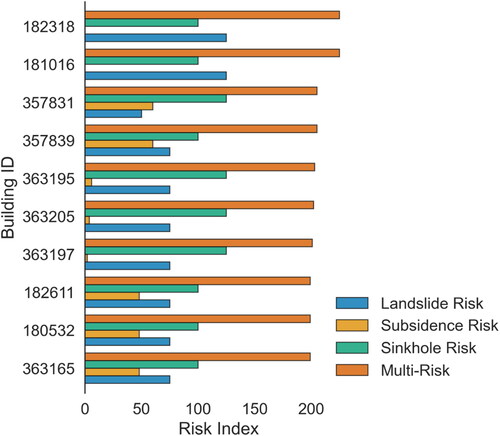Figures & data
Figure 1. Lithological units in the Municipality of Rome with the municipal districts, the study area, and the A90 highway outlined. Key to legend: 1: anthropic deposits; 3: recent and terraced sandy-gravelly alluvial deposits; 6: silty-sandy alluvial deposits, fluvio-lacustrine deposits; 7: travertines; 10: Plio-Pleistocene clayey and silty deposits; 11: marine Pliocene clays; 12: debris and talus slope deposits, conglomerates and cemented breccias; 14: marls, marly limestones and calcarenites; 41: leucitic/trachytic lavas; 43: lithoid tuffs, pomiceous ignimbritic and phreatomagmatic facies; 45: welded tuffs, tufites; 46: pozzolanic sequence; 55: alternance of loose and welded ignimbrites. EPSG:4326.
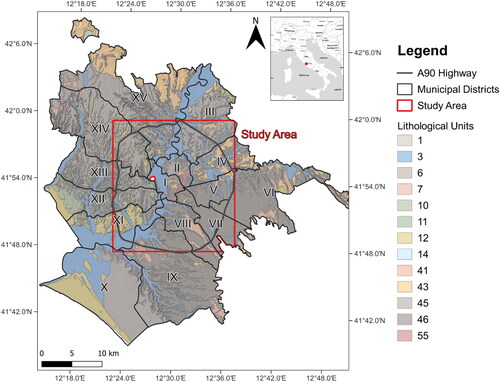
Figure 2. Flowchart of the adopted methodology to compute buildings’ single- and multi-risk scores. Coloured subplots report the workflow to derive the hazard (a), potential damage (b) and activity (c) components of the multi-risk equation. In bold the main inputs and outputs data.
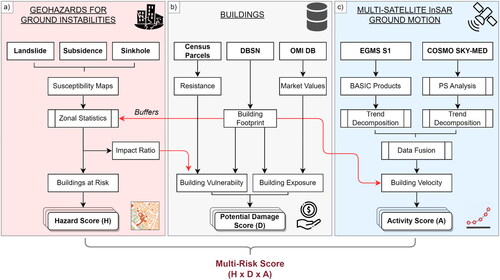
Table 1. Input data with features and role in the multi-risk ranking. ISTAT (istituto nazionale di STATistica) stands for ‘national institute of statistics’.
Figure 3. Susceptibility map for landslides (a), sinkholes (b) and subsidence (c) within the area of interest (AOI).
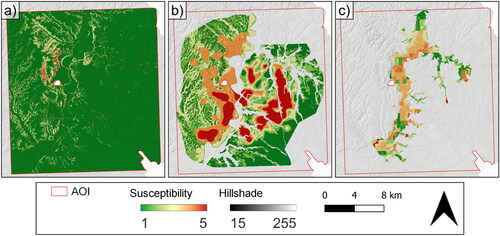
Table 2. Values of resistance factors employed in the structural resistance assessment (from Caleca et al. Citation2022).
Table 3. Contingency matrix for the assessment of building vulnerability by means of impact ratio and structural resistance classes (modified from Caleca et al. Citation2022).
Figure 4. PSs map of average velocity along LOS computed from long-term trends extracted from Sentinel-1 and Cosmo-SkyMed for ascending and descending orbits. EPSG:3857.
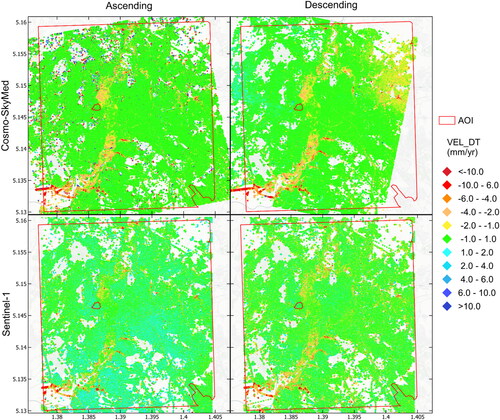
Figure 5. Overall number of buildings exposed (true) and unexposed (false) for each type of hazard investigated.
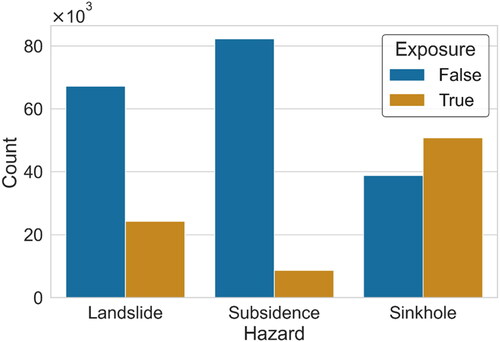
Figure 6. Hazard score of buildings for landslides (a), subsidence (b), and sinkholes (c). Statistical distribution of hazard score for elements at risk by hazard type (d). EPSG:3857.
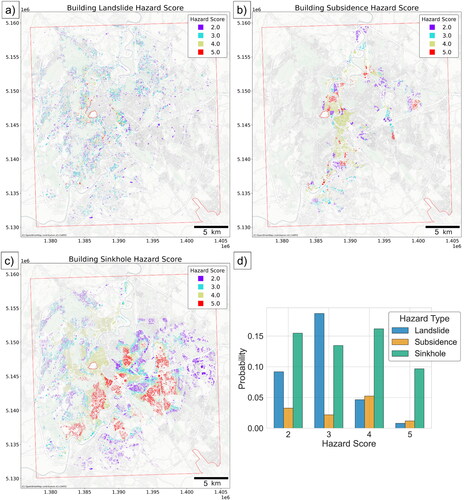
Figure 7. Probability density functions of impact ratio values by hazard type (a), and of structural resistance values for residential buildings.
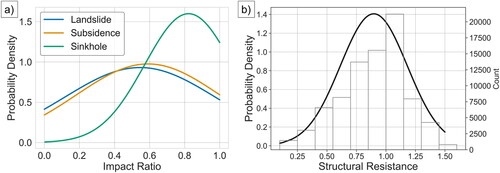
Figure 8. Graphical representation of the vulnerability value (V) assignment based on the contingency matrix reported in . Distribution of vulnerability value of elements at risk by hazard type (b).
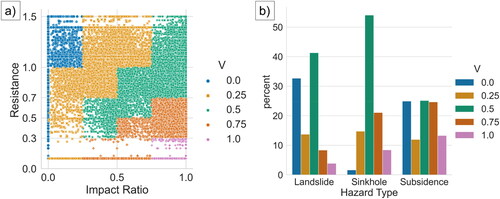
Figure 9. Real estate market values of buildings per square metre (€/m2) within the study area according to their category of use and position. EPSG:3857.
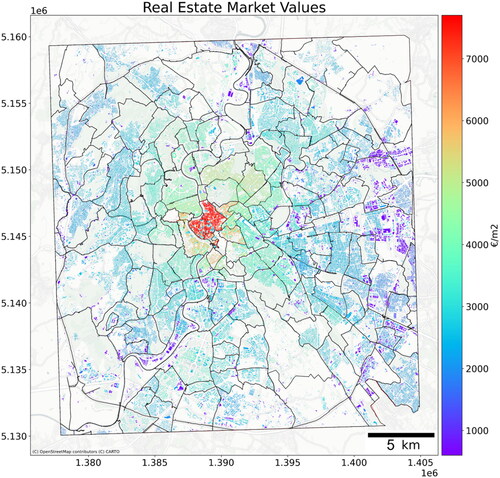
Figure 10. Potential damage score of buildings for landslides (a), subsidence (b), and sinkholes (c). Empirical cumulative distribution of economic losses per square metre selected according to hazard type (d). The coloured diamonds define percentile thresholds used to derive the five score classes. EPSG:3857.
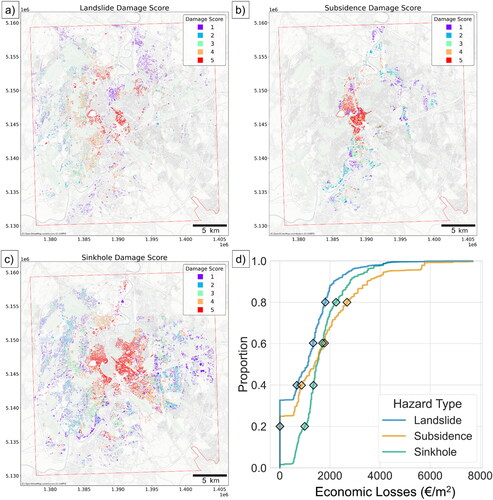
Figure 11. Buildings’ vertical (a) and horizontal (b) displacement rates (i.e. velocity) derived from the grid-based synthetic datasets () and assigned to the entire built-environment under investigation. EPSG:4326.

Figure 12. Activity score of buildings for landslides (a), subsidence (b), and sinkholes (c). Empirical cumulative distribution of absolute velocities values selected according to hazard type (d) employed to set up class thresholds. EPSG:3857.
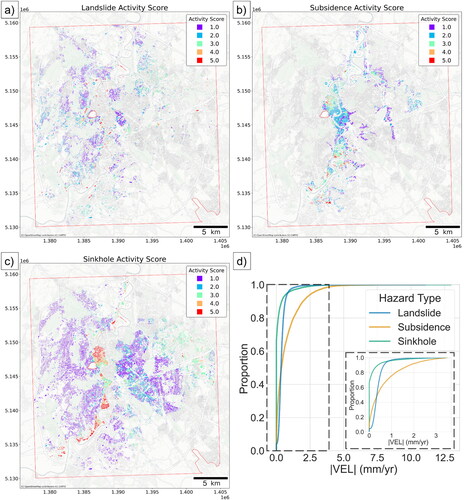
Figure 13. Risk score of buildings for landslides (a), subsidence (b), sinkholes (c) and multi-hazard (d).
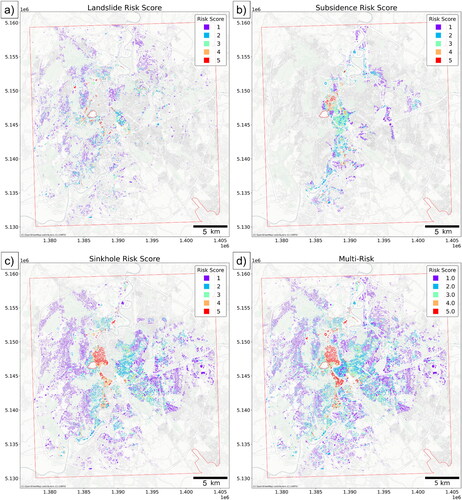
Figure 14. Spatial distribution of dominant risk threatening individual buildings (a) with a focus on the hazard type ratio among the overall elements (b), and among the buildings use categories (c).
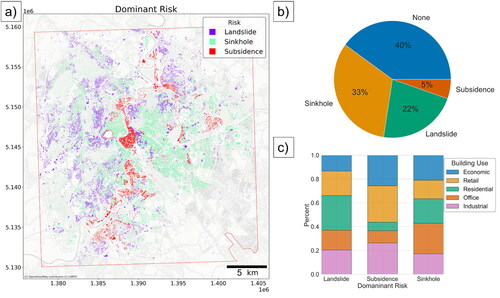
Figure 15. Average expenses (M€) and standard deviations of incurred mitigation measures within the study area compared with the multi-risk score of nearby buildings as computed in this work.
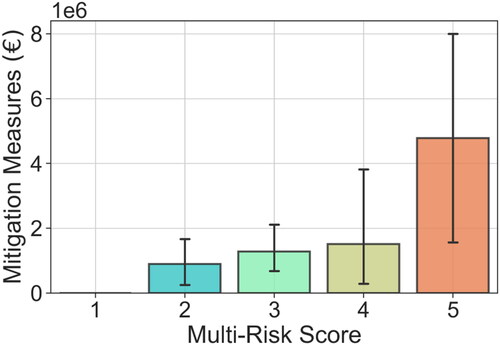
Figure A1. OMI macro-zones (a) and distribution of real-estate market values of buildings in Rome according to category of use and zone.
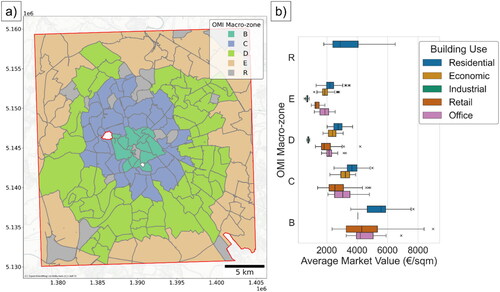
Figure A2. Synthetic datasets of up-down (a) and East-West (b) ground displacement rates derived from the data fusion of PSs resulting from A-DInSAR analyses of S1 and CSK SAR images.
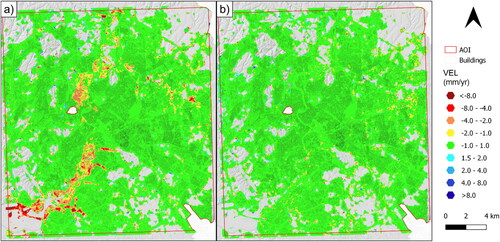
Data availability statement
All input data and the code are accessible online at the author’s GitHub page (https://github.com/gmastrantoni/mhr).

